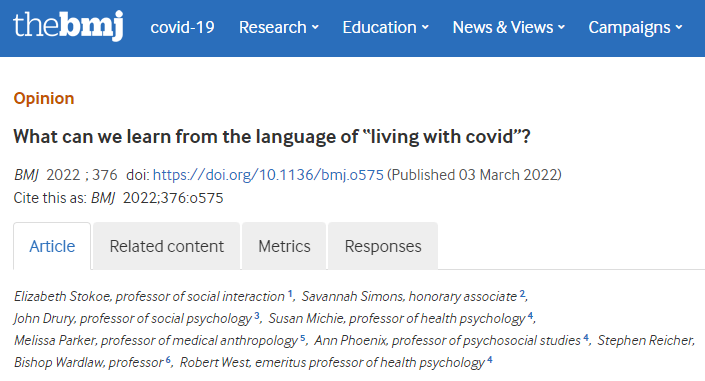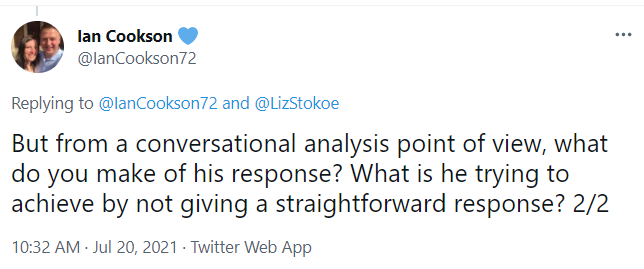
I haven’t transcribed Johnson for a while (too😡) but for the records here are his responses to Susanna Reid's questions about #Elsie, which include placing a definitive-sounding "no" after Reid suggests "you can't say anything to help Elsie, can you."
Part 1: Opening question:
Part 1: Opening question:

Part 2, in which Johnson produces incomplete responses, cut off and abandoned sentences, rushed-through turns, deviations, and stated intentions - but does not provide examples of what Elsie "should cut back on". 

Part 3, in which Reid repeats her initial question (at line 47); Johnson repeats his earlier answer (line 49); resists addressing Reid's factual challenges, and ends up placing that "no" at line 65 - he can't say anything to help Elsie because "we" are focusing on supply. 

@susannareid100's observations about how Johnson might better have responded are spot on:
The clip I transcribed (most of) is here:
And transcription symbols are here: universitytranscriptions.co.uk/jefferson-tran…
#EMCA #Communication
https://twitter.com/GMB/status/1521725703691059211
The clip I transcribed (most of) is here:
https://twitter.com/jonlis1/status/1521463180270129152?s=20&t=gdvCy1vYApi2XiHQ5Q2g6w
And transcription symbols are here: universitytranscriptions.co.uk/jefferson-tran…
#EMCA #Communication

• • •
Missing some Tweet in this thread? You can try to
force a refresh


























